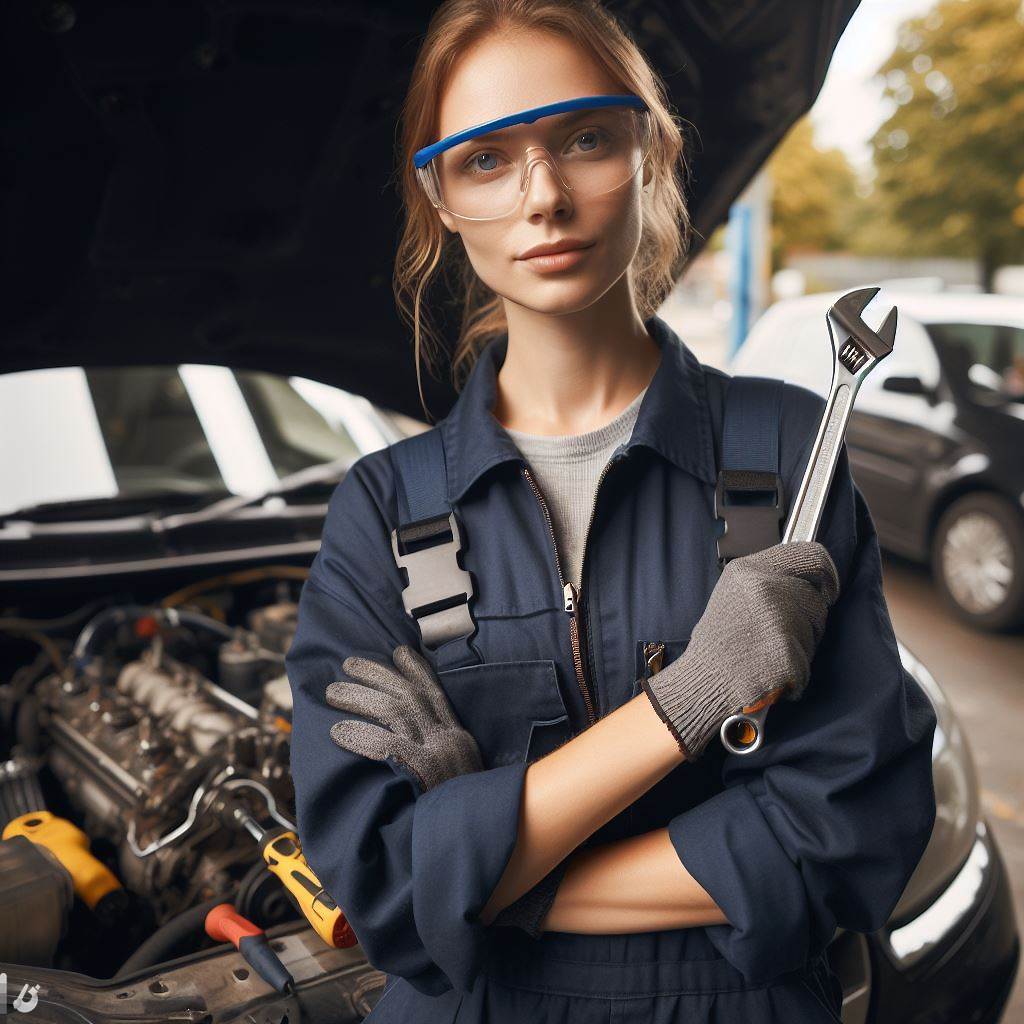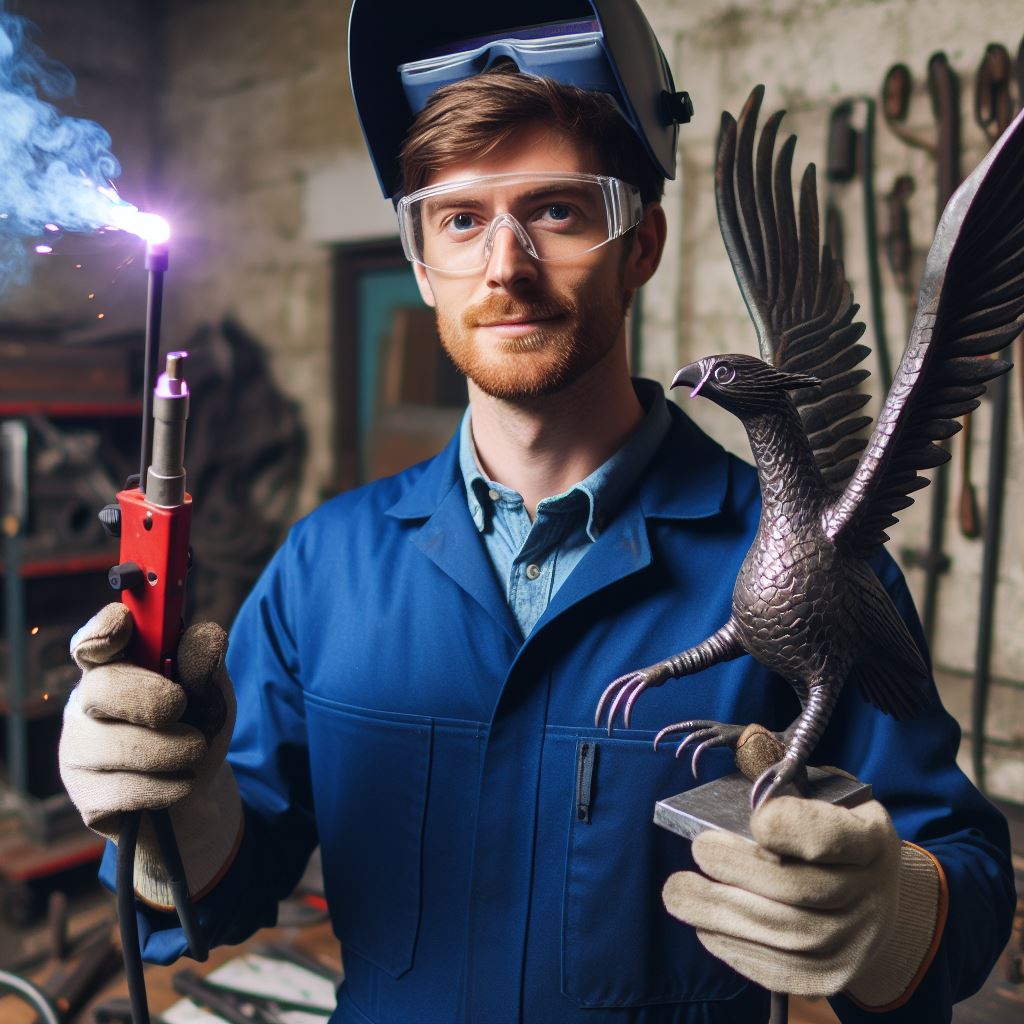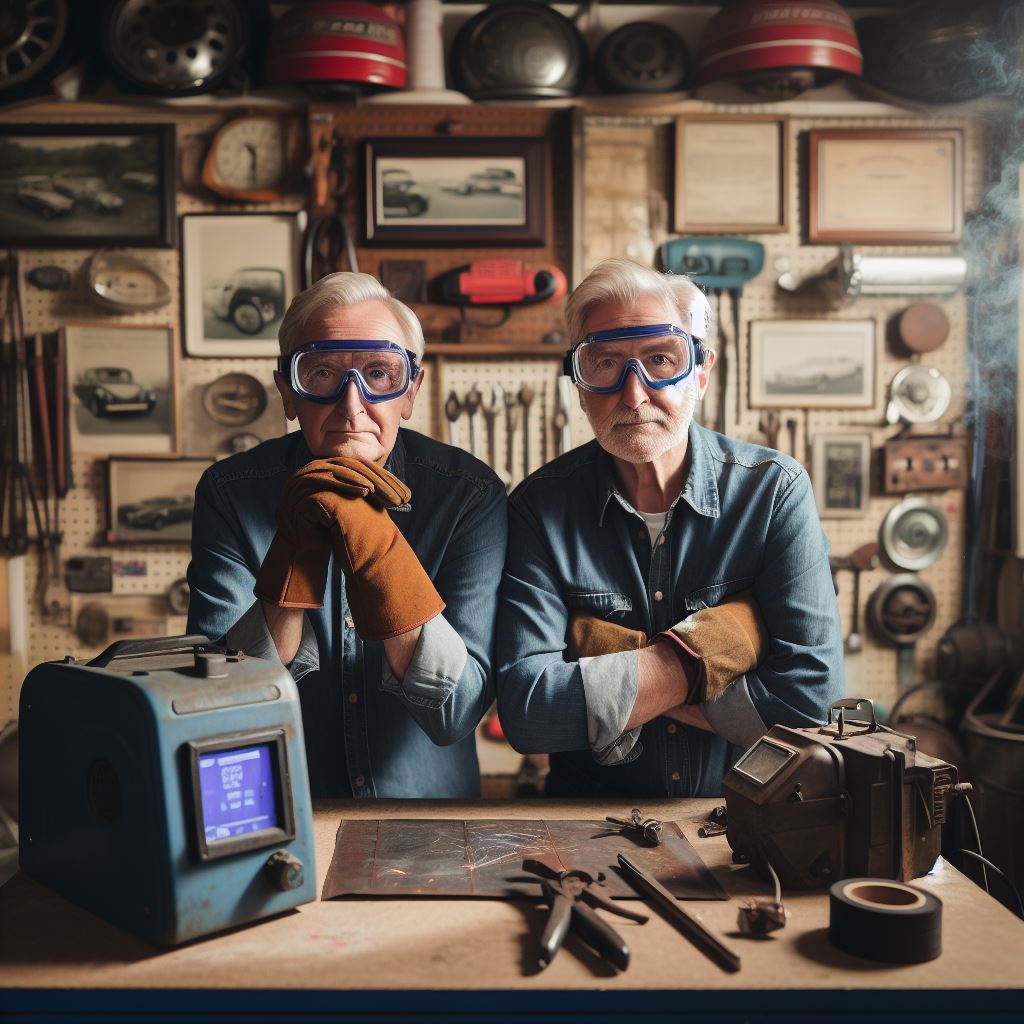Introduction
Embark on an insightful journey into the world of UK Mechanics Workshops, where the commitment to Health & Safety stands as the bedrock of operations.
As we navigate through this exploration, we unravel the multifaceted layers of ensuring occupational well-being.
From the meticulous implementation of safety guidelines to the significance of ongoing training programs, discover how these workshops prioritize the health of their workforce and clients alike.
Explore the symbiotic relationship between cutting-edge technology, stringent safety standards, and the dedication to fostering a secure and thriving environment within the dynamic sphere of automotive maintenance.
Join us in uncovering the intricate tapestry of Health & Safety practices that not only shape the mechanics industry but also underscore its commitment to excellence and responsible craftsmanship.
Overview of UK Health and Safety Regulations
Explanation of health and safety legislation in the UK
In the United Kingdom, health and safety legislation is aimed at protecting the well-being of workers and the general public.
This legislation sets out the duties of employers, employees, and self-employed individuals to ensure a safe working environment.
Employers must conduct risk assessments, provide safety training, and implement measures to minimize workplace hazards.
Employees have the responsibility to follow safety procedures, use protective equipment, and report any potential risks.
Self-employed individuals must also take reasonable measures to ensure the safety of themselves and others.
Role of the Health and Safety Executive (HSE)
The Health and Safety Executive (HSE) is the regulatory body responsible for enforcing health and safety laws in the UK.
They provide guidance and support to both employers and employees to help them comply with the regulations.
The HSE also conducts inspections and investigations to ensure that workplaces are meeting the required standards.
Legal obligations of mechanics workshop owners/operators
Mechanics workshop owners/operators have specific legal obligations to protect the health and safety of their employees and customers.
They must conduct risk assessments, provide appropriate safety equipment, and maintain a safe working environment.
Personalized UK Career Consulting
Receive tailored career guidance designed just for you. Get actionable steps and expert support to boost your career in 1-3 days. Take control of your career now.
Get StartedThis includes ensuring that tools and machinery are regularly inspected and maintained to prevent accidents.
Workshop owners/operators should also provide adequate training so employees are aware of potential hazards and know how to mitigate them.
Penalties for non-compliance with health and safety regulations
Failing to comply with health and safety regulations can result in serious consequences for mechanics workshop owners/operators.
The HSE has the power to issue improvement notices, prohibition notices, and even prosecute offenders.
Penalties can include hefty fines, imprisonment, and damage to the reputation of the business.
Furthermore, non-compliance may lead to accidents, injuries, and long-term health issues for employees and customers.
It is essential for mechanics workshop owners/operators to prioritize health and safety to protect their workers and business interests.
By adhering to the regulations and implementing best practices, they can ensure a safe and healthy working environment.
This not only benefits the individuals within the workshop but also enhances the overall reputation and success of the business.
Remember, health and safety should never be overlooked or taken lightly. Let’s create a safer working environment together!
Read: Latest Tech Trends in UK Mechanic Industry
Common Hazards in Mechanics Workshops
Identification of potential hazards in mechanics workshops
- Improperly stored or handled machinery and tools.
- Inadequate ventilation leading to exposure to harmful chemicals.
- Faulty electrical equipment and wiring.
Examples of common hazards such as machinery, tools, chemicals, and electrical equipment
In mechanics workshops, hazards can arise from various sources including:
- Machinery: Poorly maintained or operated machinery can cause serious injuries, such as amputations or crushing accidents.
- Tools: Incorrect use or lack of proper safety measures when handling tools can lead to cuts, burns, or other injuries.
- Chemicals: Exposure to hazardous substances, like solvents or cleaning agents, can result in respiratory issues, skin irritation, or even long-term health problems.
- Electrical equipment: Faulty wiring or malfunctioning electrical equipment can cause electric shocks, fires, or explosions.
Discussion on the risks associated with each hazard
Machinery
Improperly maintained or operated machinery poses a significant risk to workshop employees.
With moving parts, heavy weights, and high-powered tools, accidents can result in severe injuries or even fatalities.
Your Dream Job Starts with a Perfect CV
Get a tailored CV and cover letter that captures your unique strengths and stands out in your industry. Let us help you make an unforgettable first impression.
Get StartedIt is crucial for mechanics to receive proper training on machinery operation and maintenance to mitigate these risks.
Tools
Using tools without following safety guidelines can lead to cuts, burns, or eye injuries.
Mechanics should wear appropriate personal protective equipment (PPE), such as gloves, goggles, and protective clothing, when handling tools.
Regular inspections of tools for defects should also be conducted to ensure their safe use.
Chemicals
The chemicals used in mechanics workshops, such as solvents, degreasers, or paints, can be hazardous if not handled properly.
Workers must be trained on proper handling, storage, and disposal of chemicals.
Adequate ventilation and the use of PPE, like masks and gloves, are necessary to minimize the risk of exposure.
Electrical equipment
Faulty or malfunctioning electrical equipment can lead to electrocution or fires.
Regular inspections, maintenance, and prompt repairs of electrical equipment and wiring are essential.
Electrical outlets should be protected with circuit breakers, and fire extinguishers should be readily available in case of emergencies.
In general, mechanics workshops in the UK are associated with several common hazards, including poorly maintained machinery, improper tool handling, exposure to harmful chemicals, and faulty electrical equipment.
Recognizing and understanding these risks is essential to maintain a safe and healthy working environment for mechanics.
Implementing proper safety measures, providing adequate training, and regular inspections can significantly reduce the occurrence of accidents and injuries in mechanics workshops.
Read: Women in Mechanics: Changing UK Trends
Optimize Your LinkedIn for Success
Boost your LinkedIn profile with a professional bio, keyword-rich headline, and strategic recommendations that attract recruiters. Stand out from the crowd and get noticed.
Optimize NowHealth and Safety Measures in Mechanics Workshops
Personal Protective Equipment (PPE) Requirements for Mechanics
In mechanics workshops, personal protective equipment (PPE) plays a crucial role in ensuring the well-being of the workers.
- Safety goggles: Mechanics should wear safety goggles to protect their eyes from sparks, debris, and chemical splashes.
- Ear defenders: Due to the noise levels in the workshops, mechanics should wear ear defenders to prevent hearing damage.
- Respiratory masks: Proper face masks must be worn to safeguard against harmful substances and fumes.
- Protective gloves: Mechanics should wear gloves, appropriate for the task, to shield their hands from cuts and chemical exposure.
- Steel-toed boots: Mechanics should wear reinforced boots to protect their feet from heavy objects or tools that may accidentally fall.
Training Programs for Mechanics on Health and Safety Practices
Training programs focusing on health and safety practices are essential for mechanics to understand potential risks and prevent accidents.
- Workshop safety induction: All mechanics should undergo a comprehensive safety induction program during their initial employment.
- Regular training sessions: Ongoing training sessions should be conducted to address new safety protocols and reinforce existing practices.
- Equipment-specific training: Mechanics should receive training on the correct operation of machinery and tools, ensuring their safety.
- Emergency response training: Mechanics should be well-versed in emergency procedures to quickly and effectively respond to any accidents.
- Supervision and mentoring: Experienced mechanics should mentor new recruits to ensure they adhere to health and safety guidelines.
Regular Inspections and Maintenance of Tools and Equipment
Regular inspections and maintenance of tools and equipment are vital in keeping the mechanics workshop free from hazards.
- Tool inspections: All tools should be regularly inspected for wear and tear, ensuring they are in proper working condition.
- Calibration checks: Precision tools should be calibrated regularly to guarantee accuracy and safe operation.
- Machinery maintenance: Machinery and equipment should undergo routine servicing and maintenance to prevent malfunctions.
- Electrical safety checks: Regular electrical checks should be conducted to identify and rectify any potential hazards.
Importance of Good Housekeeping in Maintaining a Safe Workshop Environment
The implementation of good housekeeping practices is integral to maintaining a safe workshop environment for mechanics.
- Tidy and organized workspace: A clutter-free workspace reduces the risk of accidents and promotes efficient work.
- Proper waste disposal: Mechanics should dispose of waste materials, such as oil and chemical containers, properly.
- Safety signage: Clearly displayed safety signs help remind mechanics of potential hazards and the necessary precautions.
- Safety protocols: Mechanics should follow established protocols, such as cleaning up spills promptly, to prevent slips and falls.
- Regular cleaning: Regular cleaning of the workshop minimizes dust, debris, and potential respiratory issues.
Implementing and adhering to stringent health and safety measures in mechanics workshops not only prevents accidents and injuries but also creates a work environment that promotes the well-being of all workers.
Read: Average Salaries for Plumbers in the UK

Risk Assessment in Mechanics Workshops
Explanation of the risk assessment process
In mechanics workshops, risk assessment is a crucial process that involves identifying, evaluating, and controlling potential hazards.
It requires a systematic approach to ensure the safety and well-being of both mechanics and customers.
The process begins by examining the entire workshop, including equipment, tools, materials, and work procedures.
Potential risks are then identified, such as the use of heavy machinery, working at heights, exposure to hazardous substances, and electrical hazards.
Once these risks are identified, their likelihood and severity are assessed to determine the level of risk they pose.
Controls and preventative measures are then implemented to mitigate and manage the identified risks.
This can include providing personal protective equipment (PPE), implementing safety procedures, and regular maintenance of equipment.
Role of mechanics in identifying and managing potential risks
Mechanics play a critical role in identifying and managing potential risks in a workshop setting.
They are the frontline workers who are directly involved in the day-to-day operations and are aware of the specific risks associated with their tasks.
Mechanics are responsible for reporting any hazards or near-miss incidents they encounter during their work.
Their input is invaluable in identifying potential risks that may have been overlooked during the initial assessment.
By actively participating in the risk assessment process, mechanics can contribute to creating a safer working environment.
They can provide suggestions and feedback on the effectiveness of safety controls and propose improvements to enhance workplace safety.
Benefits of conducting regular risk assessments in mechanics workshops
Preventing accidents and injuries
Regular risk assessments help identify potential hazards and implement control measures to prevent accidents and injuries.
Compliance with legal requirements
Adequate risk assessments ensure compliance with health and safety regulations, reducing the likelihood of legal issues and fines.
Improved worker morale
By addressing potential risks and providing a safe working environment, mechanics feel valued and motivated, leading to improved morale.
Cost savings
Identifying and managing risks helps avoid costly accidents, equipment damage, and medical expenses, resulting in significant cost savings.
Enhanced reputation
Demonstrating a commitment to health and safety through regular risk assessments can enhance the workshop’s reputation among customers and industry peers.
Continuous improvement
Risk assessments provide an opportunity for ongoing improvement, as new hazards and risks may emerge over time.
In a nutshell, the risk assessment process in mechanics workshops is crucial for ensuring the safety of mechanics and customers.
Mechanics play a vital role in identifying and managing potential risks, while regular assessments bring about various benefits.
By systematically evaluating and controlling risks, workshops can create a safer work environment and improve overall efficiency and productivity.
Read: Mechanic Specialties: A UK Perspective
Reporting and Managing Accidents and Incidents
Importance of reporting accidents and incidents in mechanics workshops
- Reporting accidents and incidents is crucial for maintaining health and safety standards in mechanics workshops.
- It helps identify potential risks, enabling proactive measures to prevent future accidents.
- Accurate reporting provides valuable data that can be used for analysis and improvement of safety protocols.
- By reporting, mechanics workshops can comply with legal requirements and demonstrate their commitment to worker well-being.
- Reporting accidents and incidents creates awareness among employees, fostering a safety culture in the workplace.
Procedures for reporting accidents and near misses
- Immediate reporting of accidents and near misses is essential to ensure prompt action and investigation.
- Employees should inform their supervisor or manager about any accidents or incidents they witness or experience.
- Accurate details, such as date, time, location, people involved, and a clear description of what happened, should be provided.
- The incident report form should be completed and submitted to the appropriate authority within the specified timeframe.
- Confidentiality should be maintained to encourage open reporting without fear of reprisal.
Steps to be taken to manage and prevent future accidents
- Once an accident or incident is reported, it should be thoroughly investigated to determine the root causes.
- A multidisciplinary team can conduct the investigation, including representatives from management, employees, and safety experts.
- Findings from the investigation should be analyzed to identify patterns, trends, and potential hazards.
- Based on the findings, appropriate corrective actions and preventative measures must be implemented.
- This may include additional training, equipment maintenance, improved signage, or changes in working procedures.
- Regular safety audits should be conducted to ensure compliance with implemented measures and identify further areas for improvement.
In a nutshell, reporting accidents and incidents in mechanics workshops is of utmost importance for maintaining a safe working environment.
Swift reporting of major accidents and near misses allows proactive measures to prevent future incidents, ensuring a safer environment.
Accurate reporting also provides valuable data for analysis, allowing workshops to continuously improve their health and safety protocols.
Clear procedures should be in place for reporting, ensuring confidentiality and encouraging open reporting without fear of repercussions.
Conduct detailed inquiries with a diverse team to pinpoint root causes and apply effective corrective measures.
Conduct regular safety audits for continual compliance and identifying areas to enhance safety measures.
Ultimately, a strong reporting and management system is essential in creating a culture of safety in mechanics workshops and protecting the well-being of all employees.
Case Studies
Examples of mechanics workshops implementing effective health and safety measures
- Smith Auto Repairs: In order to ensure the safety of their employees, Smith Auto Repairs conducts regular safety audits to identify potential hazards.
- Green Garage: Green Garage provides all employees with personal protective equipment (PPE) and enforces its proper usage during work.
- Expert Motors: Expert Motors has implemented a comprehensive health and safety training program for all its mechanics.
- Rapid Repairs: Rapid Repairs has a designated safety officer who conducts regular safety meetings and enforces safety protocols.
- Superior Services: Superior Services ensures that all their equipment and machinery are regularly inspected and well-maintained for optimal safety.
Success stories highlighting the positive impact of prioritizing health and safety in the workplace
- Best Car Care: By focusing on health and safety, Best Car Care saw a significant reduction in workplace accidents and an increase in employee morale.
- Reliable Repairs: Prioritizing health and safety led to improved productivity and efficiency at Reliable Repairs, resulting in higher customer satisfaction.
- Proactive Auto Shop: With a strong commitment to health and safety, Proactive Auto Shop received recognition for maintaining an accident-free workplace for five consecutive years.
- Top-notch Garage: The implementation of health and safety measures at Top-notch Garage resulted in reduced sick leaves and improved overall employee well-being.
- Happy Car Shop: By creating a safe and healthy work environment, Happy Car Shop experienced reduced staff turnover and attracted skilled mechanics.
In summary, these case studies demonstrate the importance of implementing effective health and safety measures in mechanics workshops.
Prioritizing health and safety not only protects employees but also has a positive impact on overall workplace productivity, efficiency, and employee satisfaction.
Mechanic workshops can learn from these examples and strive to create a safer and healthier work environment for their employees.
Conclusion
It is crucial to prioritize health and safety in mechanics workshops to ensure the well-being of both workers and customers.
Mechanics workshops can be hazardous environments, with various risks such as exposure to harmful chemicals, accidents from heavy machinery, and potential fire hazards.
It is the responsibility of workshop owners and operators to create a safe and secure workplace.
By adhering to health and safety regulations, workshop owners/operators can mitigate risks and protect their employees and customers from potential harm.
Implementing proper training programs, providing adequate safety equipment, and regularly inspecting workshop premises are essential steps to guarantee a safe working environment.
However, it is not only the responsibility of workshop owners/operators but also of individual mechanics to be proactive in maintaining a safe work environment.
They should actively promote a safety culture by reporting hazards, following safety procedures, and using protective equipment at all times.
Mechanics’ well-being is paramount; workshop owners must prioritize health and safety, never compromising on their employees’ welfare.
They must also guarantee customer confidence in the workshop’s maintained safety standards.
It is essential for mechanics workshops to prioritize health and safety.
Both workshop owners/operators and individual mechanics must work together to create and maintain a safe work environment.
Let us all commit to maintaining high health and safety standards in mechanics workshops to protect everyone involved.
[E-Book for Sale]
500 Cutting-Edge Tech Startup Ideas for 2024 & 2025: Innovate, Create, Dominate
$19.99 • 500 Tech Startup Ideas • 62 pages
You will get inspired with 500 innovative tech startup ideas for 2024 and 2025, complete with concise descriptions to help you kickstart your entrepreneurial journey in AI, Blockchain, IoT, Fintech, and AR/VR.




